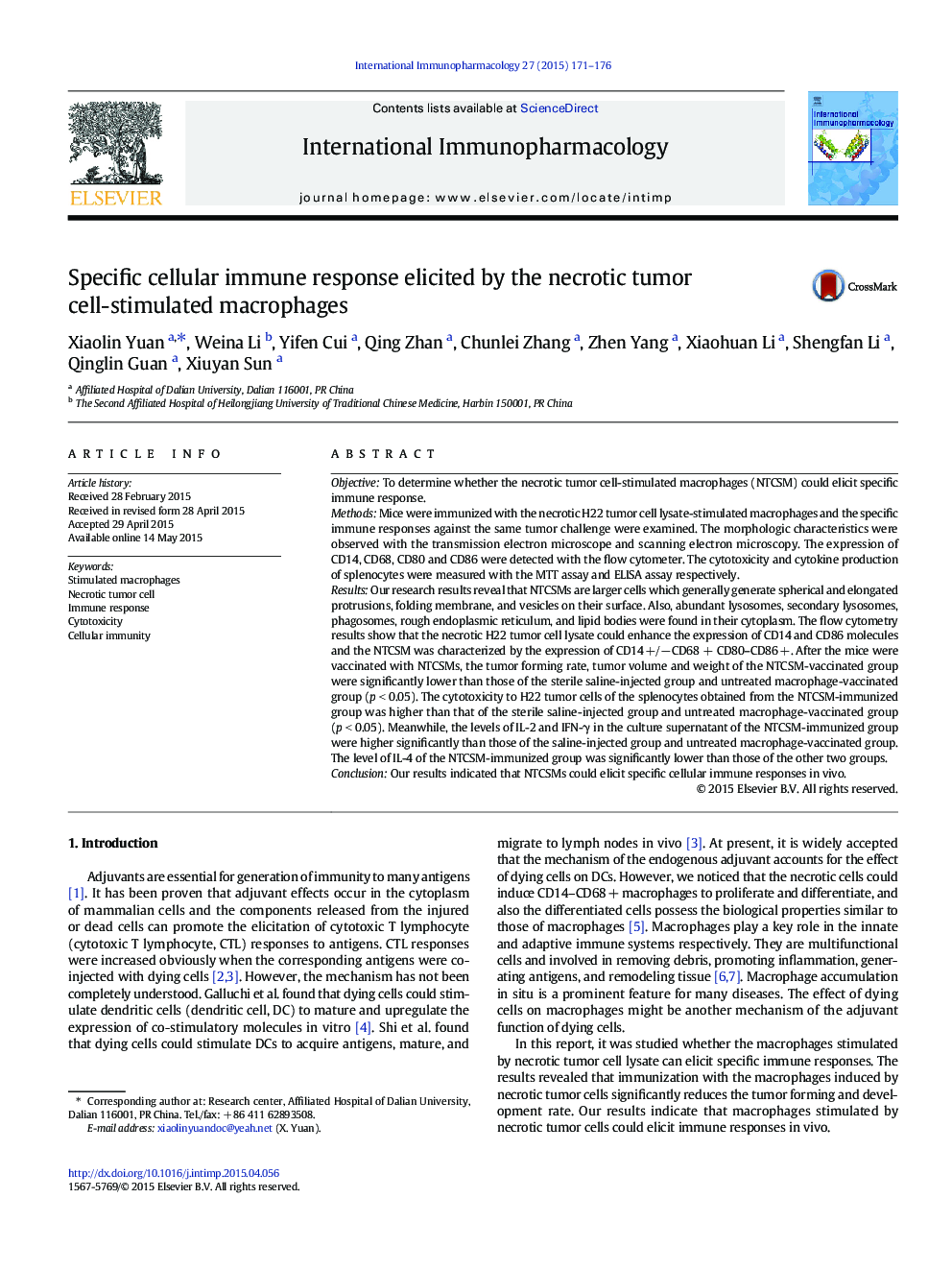| Article ID | Journal | Published Year | Pages | File Type |
|---|---|---|---|---|
| 2540674 | International Immunopharmacology | 2015 | 6 Pages |
•Necrotic tumor cells promote macrophages to express CD86 molecules.•Vaccination of necrotic tumor cell-stimulated macrophages inhibits tumor formation.•The necrotic tumor cell-stimulated macrophages can elicit specific immune response.
ObjectiveTo determine whether the necrotic tumor cell-stimulated macrophages (NTCSM) could elicit specific immune response.MethodsMice were immunized with the necrotic H22 tumor cell lysate-stimulated macrophages and the specific immune responses against the same tumor challenge were examined. The morphologic characteristics were observed with the transmission electron microscope and scanning electron microscopy. The expression of CD14, CD68, CD80 and CD86 were detected with the flow cytometer. The cytotoxicity and cytokine production of splenocytes were measured with the MTT assay and ELISA assay respectively.ResultsOur research results reveal that NTCSMs are larger cells which generally generate spherical and elongated protrusions, folding membrane, and vesicles on their surface. Also, abundant lysosomes, secondary lysosomes, phagosomes, rough endoplasmic reticulum, and lipid bodies were found in their cytoplasm. The flow cytometry results show that the necrotic H22 tumor cell lysate could enhance the expression of CD14 and CD86 molecules and the NTCSM was characterized by the expression of CD14 +/− CD68 + CD80–CD86 +. After the mice were vaccinated with NTCSMs, the tumor forming rate, tumor volume and weight of the NTCSM-vaccinated group were significantly lower than those of the sterile saline-injected group and untreated macrophage-vaccinated group (p < 0.05). The cytotoxicity to H22 tumor cells of the splenocytes obtained from the NTCSM-immunized group was higher than that of the sterile saline-injected group and untreated macrophage-vaccinated group (p < 0.05). Meanwhile, the levels of IL-2 and IFN-γ in the culture supernatant of the NTCSM-immunized group were higher significantly than those of the saline-injected group and untreated macrophage-vaccinated group. The level of IL-4 of the NTCSM-immunized group was significantly lower than those of the other two groups.ConclusionOur results indicated that NTCSMs could elicit specific cellular immune responses in vivo.
Graphical abstractFigure optionsDownload full-size imageDownload as PowerPoint slide
